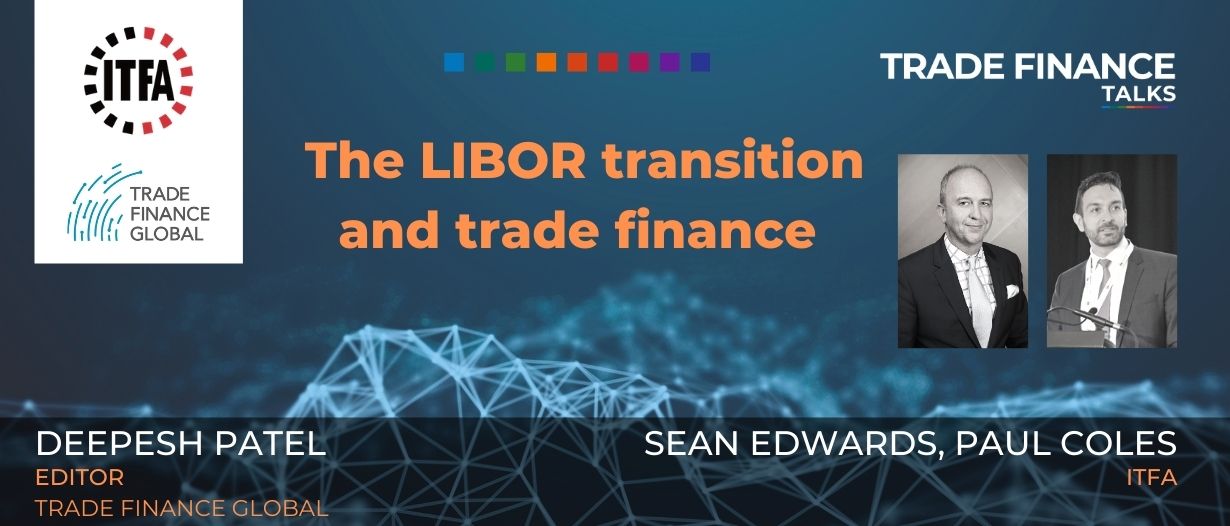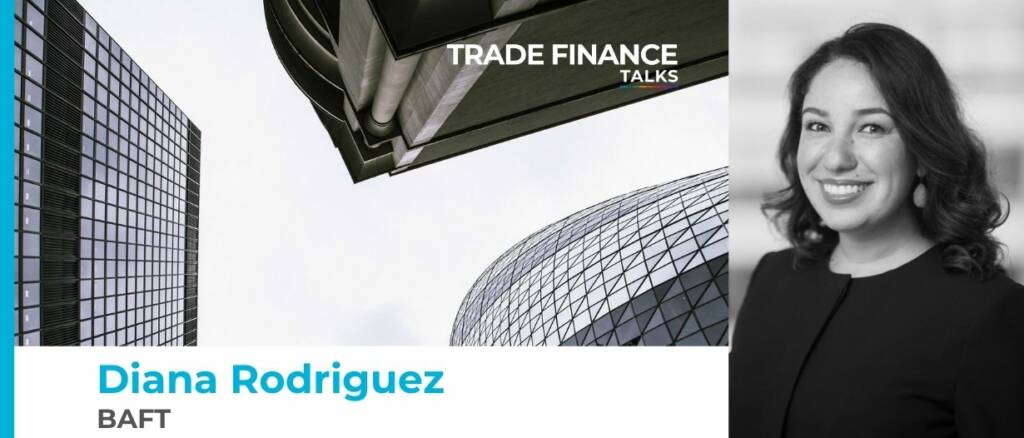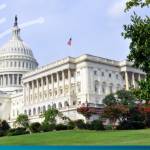Listen to this podcast on Spotify, Apple Podcasts, Podbean, Podtail, ListenNotes, TuneIn, PodChaser
Season 1, Episode 61
Host: Deepesh Patel (DP), Editor, Trade Finance Global
Featuring:
- Sean Edwards – Chairman, ITFA
- Paul Coles – ITFA Board Member and Chair of the Market Practice Committee
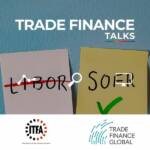
In 2014, the Financial Stability Board, or FSB, recommended that banks should use Risk-Free Rates (or, RFRs) as alternatives to LIBOR, the London Interbank Offered Rate, as well as other term-based interbank reference rates.
Despite delays due to the COVID pandemic, term-based interbank reference rates are being phased out, and according to the Loan Markets Association, LMA, 2021 has seen a sharp increase in loans referencing RFRs.
By the end of 2021, it’s anticipated that these rates will be discontinued, transitioning to the Sterling Overnight Index Average, or SONIA for short, and, for US Dollar benchmarks, the Secured Overnight Financing Rate, SOFR). But what does this mean for trade finance, trade finance documents such as Master Participation Agreements, products, and what are the current recommendations?

In this podcast by Trade Finance Global and ITFA, we discuss:
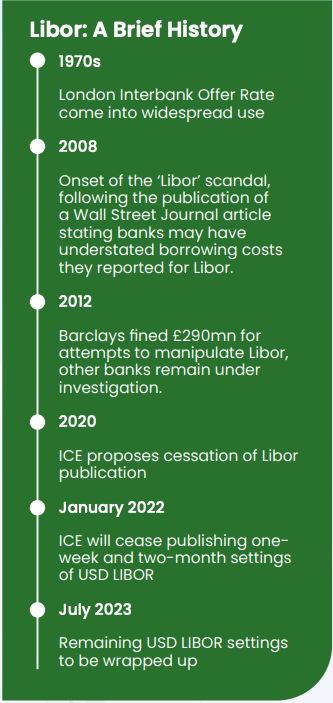
- A brief history of LIBOR, why it exists currently, and whether the ‘LIBOR transition’ is related to the LIBOR market scandals that we saw between 2008-2012
- Updates from the Loan Market Association and others for the trade finance community
- Why is LIBOR transitioning to Risk-Free Rates, and what is a Risk Free Rate?
- What is SONIA, and what is SONIA TSRR?
- What is SOFR and will there be a term SOFR?
- Trade finance products that currently reference Libor term rates
- Is the alternative to use the cost of funds?
- Are the RFRs produced compatible with standardised trade documents such as the BAFT and ITFA MPAs?
- Will switching outstanding contracts be a big job?
- ITFA and the Libor transition for trade finance















